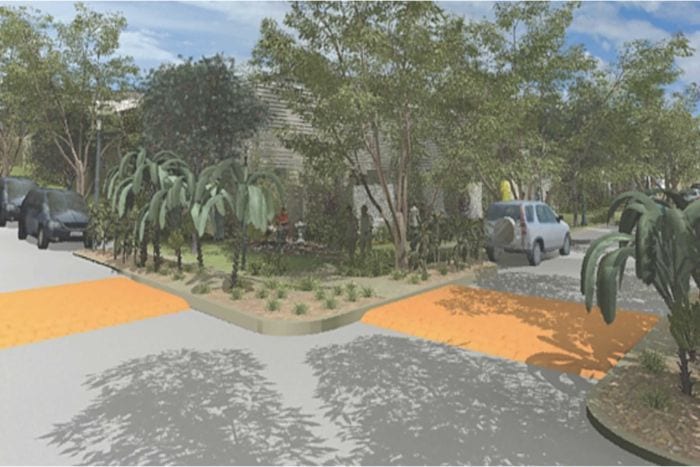With the looming El Nino weather system threatening to deliver longer and even more frequent heatwaves, a Sydney-based project is investigating the use of lighter-coloured bitumen on roads to reduce urban temperatures by as much as 7°C.
The Cool Change Cities Project, led by sustainability expert Michael Mobbs, will build a trial “cool road” in Chippendale, NSW, to compare before and after data on its surface temperatures, and any impact these changes might have on local energy bills, public health, and on surrounding biodiversity.
According to Mobbs, a “cool road” uses pale surfaces like concrete, a resin mix like bus lanes, or pale rocks shaved to present a pale surface.

And while it might sound cosmetic, it is considered a more and more important ingredient in the effort to lower the temperatures of our cities, which have been found to exacerbate extreme heat by between 4-7°C, especially overnight.
Speaking on ABC’s Lateline on Monday night, Professor Liz Hanna, an environmental health expert from the Australian National University, said the use of black roads and roofs in new housing developments – surfaces that could be 30°C hotter than forecast air temperatures – made no sense in Australia’s climate.
“We drive around and shake our heads in dismay at the silliness of this, the cost of retrofitting these houses and the poor, miserable people in the future who will have high electricity bills because they’ll be forced to cool their houses artificially,” she said.
Roads, in particular, which take up between 24 to 35 per cent of the landmass of our cities, are believed to have the effect of increasing the temperatures in suburbs, affecting power consumption and tree growth.
“If we are to do anything about our climate we must do something meaningful in our cities,” said Mobbs, director of the Cool Change Cities Project. My vision is to cool Australian cities by 2 degrees by 2020 by quite simply building cool roads.”
Citing an example from New York, Mobbs said a pale road retrofit costed at $58 million produced a saving in energy bills of $57 million alone. The research found a one-degree increase above 20 degrees increased energy use in the city by 3300 MW.
“Just imagine how transforming this could be for the people of Western Sydney, the Northern suburbs of Adelaide or the people in suburbs and towns in Western Australia,” he said.
“The NSW government, have been highly supportive of my vision – we’re discussing solutions for wider studies and rollout across the State. Other parts of the country are looking on with interest and we are in discussions with some corporate players who can immediately see the benefits here.”










